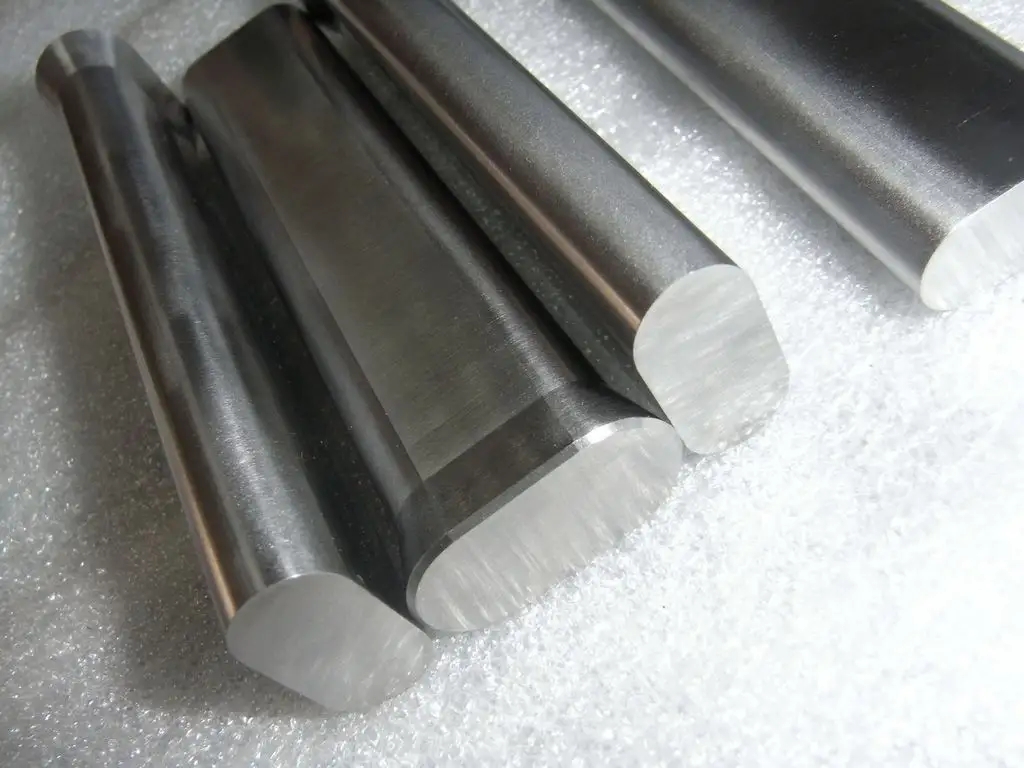High Speed Steel
High speed steel (HSS) is a kind of tool steel with high hardness, high wear resistance and high heat resistance, also known as wind steel or front steel, which means that it can harden even when cooled in air during quenching, and it is very sharp. Also known as white steel.
High speed steel is a kind of alloy steel with complex composition, which contains tungsten, molybdenum, chromium, vanadium, cobalt and other carbide forming elements. The total amount of alloy elements is about 10 ~ 25%. It can still maintain high hardness when high-speed cutting produces high heat (about 500 ℃), and the HRC can be above 60. This is the main characteristic of high speed steel – red hardness. After quenching and low-temperature tempering, carbon tool steel has a high hardness at room temperature, but when the temperature is higher than 200 ℃, the hardness drops sharply. At 500 ℃, the hardness has been reduced to a degree similar to the annealing state, completely losing the ability to cut metals, which limits the use of carbon tool steel for cutting tools. High speed steel, due to its good red hardness, makes up for the fatal shortcomings of carbon tool steel.

High speed steel is mainly used to manufacture complex thin blade and impact resistant metal cutting tools, as well as high-temperature bearings and cold extrusion molds, such as turning tools, drill bits, hobs, machine saw blades and molds with high requirements.
Tungsten Steel
Tungsten steel (cemented carbide) has a series of excellent properties such as high hardness, wear resistance, good strength and toughness, heat resistance and corrosion resistance, especially its high hardness and wear resistance, which remain basically unchanged even at 500 ℃ and still have a high hardness at 1000 ℃.
Tungsten steel is mainly composed of tungsten carbide and cobalt, accounting for 99% of all components, and 1% is other metals, so it is called tungsten steel, also known as cemented carbide, and is considered to be the teeth of modern industry.

Tungsten steel is a sintered composite material containing at least one metal carbide. Tungsten carbide, cobalt carbide, niobium carbide, titanium carbide and tantalum carbide are common components of tungsten steel. The grain size of carbide components (or phases) is usually between 0.2-10 microns, and the carbide grains are bonded together with a metal binder. Bonding metals are generally iron group metals, commonly used are cobalt and nickel. Therefore, there are tungsten cobalt alloys, tungsten nickel alloys and tungsten titanium cobalt alloys.
Tungsten steel sintering is to press the powder into billets, then heat it in the sintering furnace to a certain temperature (sintering temperature), keep it for a certain time (holding time), and then cool it down, so as to obtain tungsten steel materials with required properties.
① Tungsten Cobalt Cemented Carbide
The main components are tungsten carbide (WC) and binder cobalt (CO). Its brand is composed of “YG” (“hard, cobalt” two Chinese phonetic initials) and the percentage of average cobalt content. For example, YG8 means that the average wco=8%, and the rest are tungsten cobalt cemented carbides with tungsten carbide.
② Tungsten Titanium Cobalt Cemented Carbide
The main components are tungsten carbide, titanium carbide (TIC) and cobalt. Its brand is composed of “YT” (the prefix of Chinese Pinyin for “hard and titanium”) and the average content of titanium carbide. For example, YT15 means that the average tic=15%, and the rest is tungsten titanium cobalt cemented carbide with tungsten carbide and cobalt content.
③ Tungsten Titanium Tantalum (Niobium) Cemented Carbide
The main components are tungsten carbide, titanium carbide, tantalum carbide (or niobium carbide) and cobalt. This kind of cemented carbide is also called universal cemented carbide or universal cemented carbide. Its brand is composed of “YW” (“hard” and “ten thousand” Chinese Pinyin prefix) plus sequence number, such as yw1.
Tungsten steel has a series of excellent properties, such as high hardness, wear resistance, good strength and toughness, heat resistance, corrosion resistance, etc., especially its high hardness and wear resistance, which remain basically unchanged even at 500 ℃ and still have high hardness at 1000 ℃. Cemented carbide is widely used as materials, such as turning tools, milling cutters, drill bits, boring cutters, etc. The cutting speed of new cemented carbide is hundreds of times that of carbon steel.
What Is The Difference Between Tungsten Steel And High Speed Steel
1. Different Characteristics
High speed steel (HSS) is a kind of tool steel with high hardness, high wear resistance and high heat resistance.
Tungsten steel (cemented carbide) has a series of excellent properties such as high hardness, wear resistance, good strength and toughness, heat resistance and corrosion resistance.
2. Different Ingredients
High speed steel is a kind of complex steel, and its carbon content is generally between 0.70 ~ 1.65%. The amount of alloy elements is large, and the total amount can reach 10 ~ 25%.
Tungsten carbide, cobalt carbide, niobium carbide, titanium carbide and tantalum carbide are common components of tungsten steel. The grain size of carbide components (or phases) is usually between 0.2-10 microns, and the carbide grains are bonded together with a metal binder. Binder usually refers to metal cobalt (CO), but for some special purposes, nickel (Ni), iron (FE), or other metals and alloys can also be used.
3. Different manufacturing processes
Tungsten steel sintering is to press the powder into billets, then heat it in the sintering furnace to a certain temperature (sintering temperature), keep it for a certain time (holding time), and then cool it down, so as to obtain tungsten steel materials with required properties.
The heat treatment process of high-speed steel is complex, which must go through a series of processes such as quenching and tempering. It is usually produced by electric furnace, and high-speed steel was produced by powder metallurgy, so that carbides are evenly distributed on the matrix in extremely fine particles, which improves the service life.


